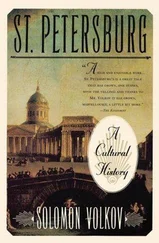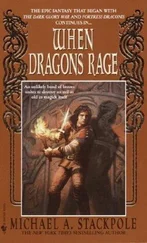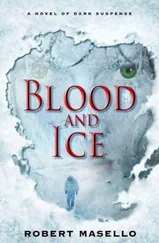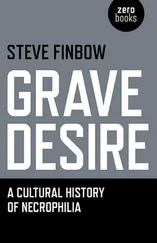Nothing would be gained in these pages by attempting to impose uniformity on the spelling of Muslim names. Many Western Muslims have their own preferred forms; French transliterations from the Arabic, for example, differ from English; and there is even debate about the most respectful way to spell the Prophet’s name. My policy is to aim for consistency with each person’s name and not to worry that one is Mohammed, another Mahomed, a third Muhammad and so on. I have similarly left it to my sources to determine whether measurements are imperial or metric.
I would like to offer warm thanks to Heather Higgins of the Randolph Trust and Director John Raisian of the Hoover Institution, Stanford University for making it possible for me to research and write this book under the aegis of a leading US think-tank. Self-evidently it is not one that espouses the sanctimonious ethos of the New York Times and is all the better for that. Andrew Wylie, Peter James and several friends at HarperCollins have made producing this book a pleasure despite a subject matter that frequently lowers one’s spirits. Among the people who have afforded insight and encouragement from within the counter-terrorism milieu, I would especially like to thank Shmuel Bar, Paul Bew, Adrian Weale and Dean Godson as well as others who wish to remain anonymous.
Michael Burleigh
August 2007

CHAPTER 1
Green: The Fenian Dynamiters
I FRIENDS ACROSS THE OCEAN
Irish grievances against the British in the nineteenth century were many. The British had garrisoned Ireland with troops, and favoured the industrious Protestant Scots-Irish of the North, because they suspected that its predominantly Roman Catholic inhabitants would rebel with the aid of a foreign foe at the first opportunity. In addition to the Ulster Presbyterians, there was an established, that is privileged, Protestant Church of Ireland, even though most of the population were Catholics. There was a fine Protestant university, Trinity College, Dublin, but none for Catholics. Ireland was part of a global empire, but was often treated as an offshore agricultural colony where labourers and poorer tenant farmers lived in chronic insecurity at the whim of absentee English landlords. Millions had left for the US (and industrialising Britain) where they adopted radical views that were far in advance of those of most people in Ireland itself. Confronted by virulent strains of American Protestantism, they compensated for discrimination by becoming more aggressively Irish, caricaturing the English as latter-day Normans and sentimentalising the old country with its ancient barrows, bogs, castles and mists. That these were historically authentic was partly due to their being noted, from 1824 onwards, on detailed Ordnance Survey maps, while another British intrusion – the national census – ironically contributed to a growth of Irish cultural nationalism. Successive censuses had startling revelations. Whereas in 1845 half the population spoke Irish (or Gaelic), by 1851 this had fallen to 23 per cent, and below 15 per cent forty years later. The Gaelic League was born of a desire for an Irish-Irish patriotic literature at a time when the brightest stars in that firmament were Anglo-Irish Protestant nationalists like J. M. Synge, Sean O’Casey or W. B. Yeats. 1
Many complexities about the real, as opposed to imaginary, Ireland were lost in the Atlantic translation as fond hearts filled with hatred. Irish volunteers for the British army, replete with their own Catholic military chaplains, won a disproportionately high number of Victoria Crosses during the Crimean War. English and Irish liberals, led by the High Anglican prime minister William Ewart Gladstone, combined with British nonconformists to disestablish the anomalous Church of Ireland in 1869. Partly due to the disruptive ingenuity of a caucus of Irish MPs in the House of Commons, notably under Charles Stewart Parnell, and endemic rural criminality, Land Acts alleviated the insecurity of the smallest class of tenants. Finally, more and more British politicians, led eventually by Gladstone himself, were persuaded that Ireland’s future lay in some degree of Home Rule, with separate legislatures benefiting both England and Ireland, the two countries joined at a more exalted level for defence or foreign policy by an imperial parliament continuing to sit at Westminster. That prospect, which became real enough on the eve of the First World War, was sufficient for the Protestant majority in Ulster to seek German arms to preserve their membership of a more developed Belfast-Glasgow-Liverpool industrialised axis, if necessary detached from the benighted clerical South. 2
Irish terrorism grew out of a venerable insurrectionary tradition that was manifestly failing by the mid-nineteenth century, only to return with a vengeance after an intervening lull in the late 1960s. The older history created many of the myths and martyrs of the more recent Troubles, as well as patterns of behaviour and thought that have survived in armed Irish republicanism within our lifetimes. There were many malign ghosts.
On 17 March 1858 an organisation was founded in Dublin by a railway engineer called James Stephens. It was St Patrick’s Day. Within a few years this mutated into the Irish Republican Brotherhood, although that name was never employed as widely as ‘Fenians’. This referred to a mythical band of pre-Christian Irish warriors, or the Fianna, roughly similar to romantic English legends about the Knights of King Arthur. For the English it meant a dastardly gang of murdering desperadoes. Fenianism encompassed a range of activities, with harmless conviviality and labour activism at the legal end of the spectrum, through to rural disturbances, insurrection and terrorism on the illegal margins. Incubated in the political underworld of Paris, or the rough-and-ready slums of North America’s eastern seaboard, the culture was heavily indebted to that of secret societies, with arcane rituals, masonic oaths and signs, a major reason why the Roman Catholic Church was largely unsympathetic. The general goal was the ‘disenthralment’ of the Irish race and the achievement of an Irish republic through violent struggle, all this within a broader context of Gaelic cultural self-assertion to which there has been some allusion. 3
The strategy, ultimately derived from the 1798 Wolfe Tone rebellion, was to transform British imperial difficulties into Irish opportunities. The imperial difficulties included the Crimean War, the Indian Mutiny and the Zulu, Sudan and Boer Wars, as well as crises in British relations with France in the 1850s, with the US in the 1860s, and with Russia in the 1870s, for a war with any of these would enhance the prospects of an independent Irish republic. While the number of Irish heroes in the Crimea seemed to suggest that this strategy had failed, the Fenians took courage from the war’s exposure of Britain’s military deficiencies and the barely concealed rift with its French ally. In addition to trying to arm the Zulus, even the mahdi’s ‘swarthy desert warriors’ became objects of Fenian interest, a trend that would continue into the late twentieth century in the form of Irish Republican Army links with the Palestine Liberation Organisation and Libya. 4
The Fenians drew upon the wider Irish emigration, whether in mainland Britain or the United States of America. They included refugees from the conditions that had produced the mid-nineteenth-century famine, of which many Irish-Americans had raw memories. Life in the urban Irish ghettos of the US (or industrial Britain) was primitive. The Irish were also heartily disliked by the Protestant aristocracy that dominated the US, a fact which may explain their flight into a vehement Irishness which had much purchase in Boston or ‘New Cork’. The American Civil War marked an important turning point since Britain was perceived to have supported the Confederate South, at a time when 150,000 Irish-Americans were fighting predominantly for the North. The Irish-Americans would inject Fenianism with money and military expertise.
Читать дальше
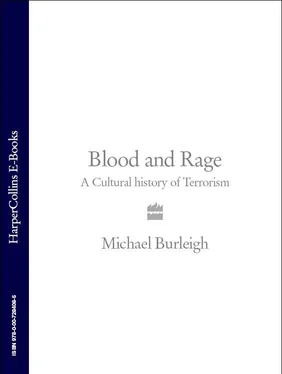
 CHAPTER 1 Green: The Fenian Dynamiters
CHAPTER 1 Green: The Fenian Dynamiters
